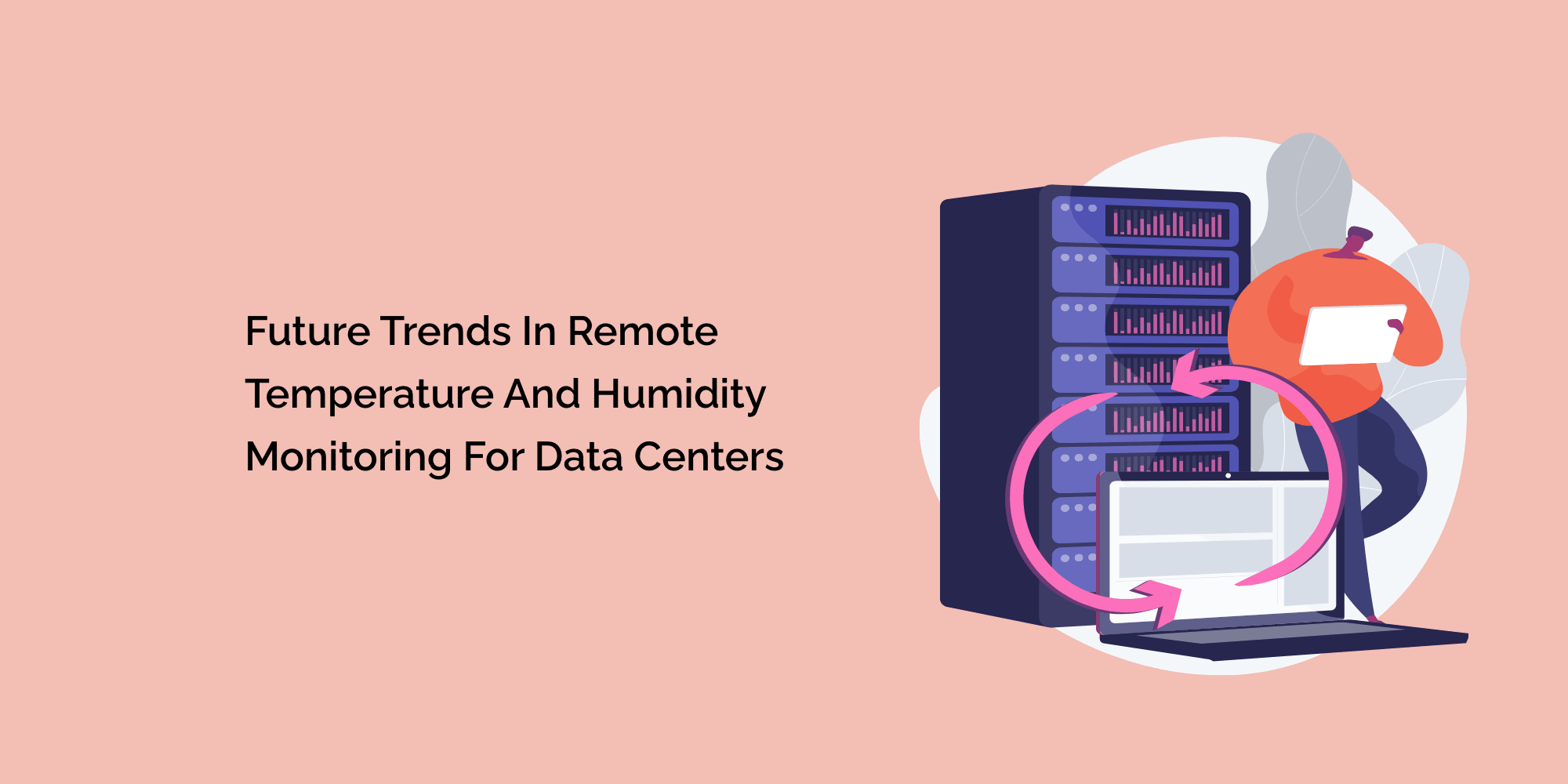As data centers evolve and become increasingly complex, monitoring environmental conditions such as temperature and humidity becomes even more crucial. Remote temperature and humidity monitoring solutions have revolutionized data center management, providing real-time insights and enabling proactive decision-making. In this blog, we will explore the future trends in remote temperature and humidity monitoring for data centers, shedding light on the innovative technologies and practices that will shape the industry.
Internet of Things (IoT) Integration
Integrating Internet of Things (IoT) devices and sensors into data centers is set to revolutionize remote monitoring. IoT-enabled sensors offer enhanced capabilities such as wireless connectivity, data analytics, and advanced automation. This section discusses the potential of IoT integration in data centers, highlighting the benefits of seamless communication between sensors, monitoring systems, and other critical infrastructure components.
Edge Computing and Distributed Monitoring
The rise of edge computing and distributed data centers has created a need for remote temperature and humidity monitoring at the edge. This section explores the concept of broadcast monitoring, where sensors are strategically placed at various edge locations to monitor environmental conditions in real time. It discusses the benefits of localized monitoring, reduced latency, and improved decision-making for edge-based data centers.
Artificial Intelligence (AI) and Machine Learning (ML)
Artificial Intelligence (AI) and Machine Learning (ML) algorithms are becoming increasingly sophisticated, offering robust data analysis and anomaly detection capabilities. This section explores how AI and ML can be applied to remote temperature and humidity monitoring in data centers. It discusses the potential for predictive analytics, early fault detection, and proactive maintenance based on patterns and trends identified in the collected data.
Predictive Maintenance and Condition-Based Monitoring
Predictive maintenance techniques leverage real-time sensor data to predict potential equipment failures and initiate proactive maintenance actions. This section delves into condition-based monitoring, where temperature and humidity data are combined with other relevant parameters to assess the health and performance of data center infrastructure. It highlights the benefits of reducing downtime, optimizing maintenance schedules, and extending equipment lifespan.
Cloud-Based Monitoring and Analytics
Cloud-based solutions offer scalability, flexibility, and centralized data management for remote monitoring applications. This section explores the trend of using cloud platforms for storing, processing, and analyzing temperature and humidity data. It discusses the advantages of cloud-based monitoring, including real-time data access from anywhere, collaboration among multiple stakeholders, and leveraging advanced analytics tools.
Enhanced Visualization and Reporting
Data visualization and reporting capabilities continue to advance, enabling data center operators to gain actionable insights from temperature and humidity data. This section explores the future trends in visualization techniques, including interactive dashboards, 3D representations, and augmented reality (AR) interfaces. It emphasizes the importance of user-friendly and intuitive visualization tools for efficient data interpretation and decision-making.
Integration with Artificial Environments
As data centers become more environmentally conscious, there is a growing interest in integrating temperature and humidity monitoring with artificial environments. This section explores the potential of technologies such as liquid cooling, modular containment systems, and intelligent airflow management. It discusses how remote monitoring can optimize the operation of these artificial environments, leading to improved energy efficiency and reduced carbon footprint.
Enhanced Security and Compliance Features
Data center security and regulatory compliance remain top priorities. This section highlights the future trends in remote temperature and humidity monitoring solutions, including enhanced security features such as data encryption, secure protocols, and advanced access controls. It also addresses the evolving regulatory landscape and how remote monitoring can help data centers meet compliance requirements.
Integration with Data Center Infrastructure Management (DCIM) Systems
Integration with Data Center Infrastructure Management (DCIM) systems continues to be an important trend in remote monitoring. This section explores the future advancements in integrating remote monitoring solutions with DCIM platforms. It discusses the benefits of centralized data management, streamlined workflows, and improved decision-making through the seamless exchange of information between monitoring systems and other data center management tools.
Continuous Innovation and Adaptation
The remote temperature and humidity monitoring field for data centers is continuously evolving. This section emphasizes the importance of staying up-to-date with industry trends and embracing a culture of continuous innovation. It highlights the need for data center operators to adapt to emerging technologies and practices to unlock the full potential of remote monitoring for improved performance and sustainability.
Certainly! Here are some frequently asked questions (FAQs) about remote temperature and humidity monitoring in data centers:
What is remote temperature and humidity monitoring in data centers?
Remote temperature and humidity monitoring in data centers refers to using sensors and monitoring systems to collect real-time data on environmental conditions from a centralized location. This allows data center operators to monitor temperature and humidity levels remotely without physical presence in the data center.
Why is remote monitoring necessary for data centers?
Remote monitoring is essential for data centers as it enables operators to continuously monitor temperature and humidity levels, critical factors for IT infrastructure's reliable and efficient operation. Remote monitoring provides real-time data insights, allowing operators to promptly detect and address environmental issues, preventing equipment failures and optimizing energy efficiency.
How does remote temperature and humidity monitoring work?
Remote temperature and humidity monitoring systems consist of sensors placed strategically throughout the data center to measure environmental conditions. These sensors are connected to a centralized monitoring system that collects and analyzes the data. The data is then accessible remotely through a secure web-based interface, enabling operators to monitor and manage the environmental conditions in real time.
Conclusion
Remote temperature and humidity monitoring is poised to play a vital role in the future of data center management. By embracing trends such as IoT integration, AI and ML analytics, cloud-based solutions, and enhanced visualization, data centers can gain valuable insights and optimize their operations. The future of remote monitoring holds immense potential for improving efficiency, reducing downtime, ensuring compliance, and creating more sustainable data centers. Data center operators and professionals must embrace these trends, collaborate with industry experts, and invest in innovative solutions to stay ahead in an ever-evolving digital landscape.








